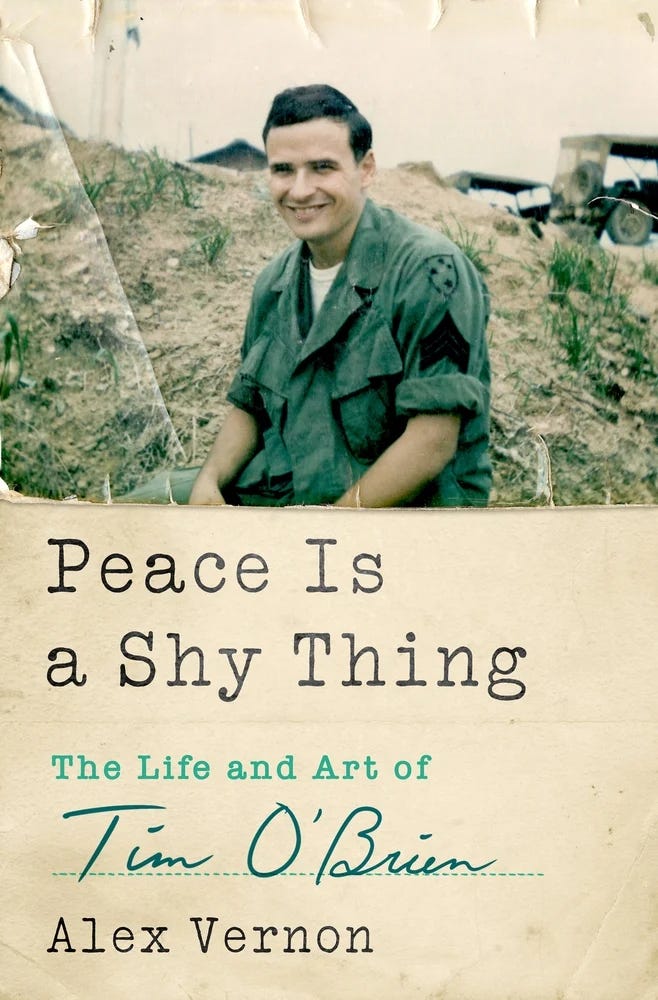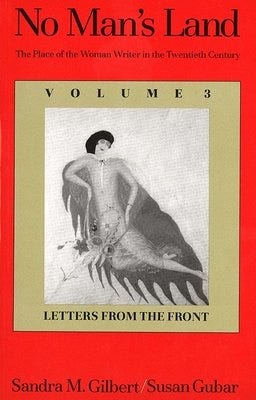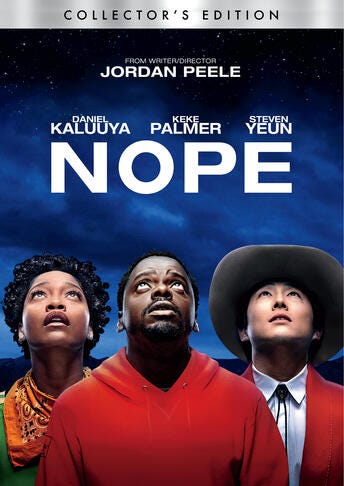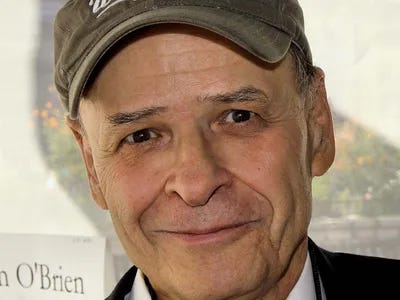“I fought in the first Iraq war way back in the early 90s. When it came time to write a dissertation, before the outbreak of America’s 21st century wars, there weren’t a lot of scholars doing war literature. I saw an opportunity. [Tim] O’Brien and I became acquainted, then became friends. He asked me to write his biography. But it’s also important to know that he has not read a single page of it. He opened himself up to me but otherwise got out of the way.”
-Alex Vernon
In this week’s newsletter:
ClioVis
3 Episodes on Trains
Scholarly Sources with Alex Vernon
ClioVis
ClioVis is a history mapping software that helps researchers, teachers, and students visualize the cause and effect relationships between historical events. Erika Bsumek, the creator of ClioVis and a history professor at UT Austin, developed the tool as a teaching aid, but she and other scholars soon discovered that ClioVis’ history mapping tools were transformative for conducting their own research. Listen to our interview with Marcus Golding, Director of Educational Operations at ClioVis to learn more about how you can use ClioVis in the classroom and in your own research.
Below is a video of several case studies using ClioVis:
3 Episodes On Trains
In 1825, the first steam-hauled passenger train on a public railway departed Stockton & Darlington Railway in Shildon, England. As of 2023, 8 billion passengers used railways for national journeys in 2023 in the European Union alone, traveling a total of 429 billion passenger-kilometres. This week, listen to 3 great interviews with scholars who have investigated the influence of railways on the Atlantic Coast of the United States, emergency medicine during the Second World War, and its potential as a social good.
David Alff shows how the Northeast Corridor transformed hundreds of miles of Atlantic shoreline into a political capital, a global financial hub, and home to fifty million people in his fascinating book, The Northeast Corridor: The Trains, the People, the History, the Region. He highlights the ways that freight trains, commuter rail, and Amtrak influenced—and in turn were shaped by—centuries of American industrial expansion, metropolitan growth, downtown decline, and revitalization.
In A Different Track: Hospital Trains of the Second World War, Alexandra Kitty introduces readers to the world of hospital trains in the Second World War. Passenger trains were converted into mobile emergency wards that could carry supplies and medical personnel, and became instrumental in tending to the critically wounded during the most deadly conflict of the 20th century.
Listen to Tom Haines-Doran discuss his book Derailed: How to Fix Britain's Broken Railways, which examines issues plaguing Britain’s railway system. He proposes that we view the railway as a social good and integral feature of the national economy so that it can play an instrumental role in decreasing social inequalities, strengthening the economy, and supporting a transition to a sustainable future.
Scholarly Sources: Alex Vernon
Originally from Prairie Village, Kansas, Alex Vernon received a B.S. from the U.S. Military Academy at West Point, and after serving in the Persian Gulf War, an M.A. and PhD from the University of North Carolina-Chapel Hill. He’s the M.E. and Ima Graves Peace Distinguished Professor of English at Hendrix College in Arkansas. He recently published Peace is A Shy Thing: The Life and Art of Tim O'Brien (St. Martin’s Press, 2025).
Q: What are you reading right now?
A: I just finished Sylvia Townsend Warner’s Lolly Willowes, which I think is more complicated than the protagonist’s concluding feminist speech would have it be. I’d like to teach it someday to see what my students and I can do with it. My worry, though, is that even though it’s a short novel, the students will be impatient and maybe even bored, because the great plot fact— that the protagonist becomes a witch— doesn’t happen until halfway through the third of three parts.
Q: What is your favorite book or essay to assign to give to people and why?
A: It totally depends upon the context, plus most everything I assign I’m excited about. Billy Lynn’s Long Halftime Walk, by Ben Fountain, is a great book for asking students to reflect on themselves as consumers of war news and war media. Of entertainment more generally. I recently taught a course called “Looking at War,” which mostly involved film, but we started with Dalton Trumbo’s Johnny Got His Gun. It’s a first-person novel in which we learn, with the narrator, that he has survived the Great War with no arms, no legs, is blind and deaf, and had the lower half of his face scooped out so that he can’t smell, taste, or speak. Remember, this is for a course called “Looking at War”--and this book is literally about not being able to see. The class had great conversations about the somatic and imaginative differences between literature and film, and about this novel as much body horror as war literature (which really most always ought to amount to the same thing). Willa Cather’s My Antonia is fantastic to teach. Faulkner’s Absalom, Absalom!, any of Morrison’s “love trilogy,” (Beloved, Jazz, and Paradise), and Wideman’s Homewood Trilogy are also great.
Q: Is there a book you read as a student that had a particularly profound impact on your trajectory as a scholar?
A: That’s a good question. I don’t align myself with any particular school. Interactions with my students have probably been more impactful than any theoretical lens. Historical and cultural context, which probably best characterizes my bent, is sort of a catch-as-catch-can scholarly proposition. That said, early on, the essay “Soldier’s Heart,” from Gilbert and Gubar’s No Man’s Land: The Place of the Woman Writer in the Twentieth Century, was really important for my learning to think about war and gender. As an undergraduate, I was probably most affected by Virginia Woolf’s Moments of Being. Until then, in high school, “literature” meant fiction, poetry, drama. I don’t even remember Woolf’s essays, only that the professor treated them, that book, as literature. That was my introduction to the idea that nonfiction can be just as artful as what we traditionally think of as imaginative literature.
Q: What's the best book you've read in the past year?
A: I was most enamored with a collection of Daphne Du Maurier stories, Don’t Look Now (New York Review Books). I’d never read her before. Wow. "Monte Verità" and “The Birds” were particular stand-outs in the book for me. Absolute pleasures to read and to think about. Now I need to read Rebecca.
Q: Have you seen any films, documentaries, or museum exhibitions that left an impression on you recently?
A: Jordan Peele’s film Nope blew me away. Visually and intellectually stunning, and funny! We ended a “Postmodern and Contemporary Literature” course with it, a course that began with Flannery O’Connor’s Wise Blood. I didn’t even realize, when constructing the syllabus, how perfectly the two texts worked to bookend the course. At this point in the year, I do hope Ryan Coogler’s Sinners wins a lot of Best Picture awards, but for a genius genre-mash up that features horror, I prefer Nope.
Q: What do you plan on reading next?
A: Tạ Duy Anh's The Termite Queen and Dương Hướng’s No Man River, two Vietnamese novels recently translated into English by Quan Manh Ha and Charles Waugh. Also The Anatomy of a Soldier, by Harry Parker. Finally, this fall I’m teaching Keats in a Literary Analysis class. I haven’t studied Keats in many, many years; I look forward to being re-immersed in the poetry. We’ll start the semester with “On First Looking into Chapman’s Homer,” a far more interesting poem than I remembered from first encountering it thirty-some years ago.
Q: Is there anything about Tim O’Brien you’d like to share with our readers who haven’t heard of him? And what sparked your interest in writing about him?
A: Tim O’Brien is the preeminent American creative chronicler of the war in Vietnam, and many readers consider him one of the best writers of his generation. His novel Going After Cacciato won the National Book Award. His work of fiction The Things They Carried is his most well-known and well-beloved book; there’s evidence to support a claim that it’s the most taught 20th century American book of fiction in the US and maybe even abroad. He has supplanted Hemingway as the writer that literary-minded soldiers and veterans–and heck, pretty much everyone–turns to.
I fought in the first Iraq war way back in the early 90s. When it came time to write a dissertation, before the outbreak of America’s 21st century wars, there weren’t a lot of scholars doing war literature. I saw an opportunity. O’Brien and I became acquainted, then became friends. He asked me to write his biography. But it’s also important to know that he has not read a single page of it. He opened himself up to me but otherwise got out of the way.
Q: Who should read Peace is A Shy Thing and why?
A: Anyone interested in Tim O’Brien, of course! One review called it “a must-read for lovers of American history, American literature and biographical writing”— so that’s a good start. Good writing should give readers several reasons to care, to want to keep reading. We are all historical subjects, and O’Brien’s work explores what happens when people are caught up in historical circumstances. Peace is a Shy Thing, then, is as much a history of his era as it is a story of his character and his becoming a writer. I also tried to structure the book enticingly. The reader’s experience was forefront in my mind.
Q: Anything else you’d like to share?
A: Although I have written this biography, I don’t think of myself as a biographer. I don’t imagine there will be another one. As a literary historian and veteran of the generation between the war in Vietnam and the wars in Iraq and Afghanistan (and elsewhere), I’m something of a bridge for those eras. Given my relationship with O’Brien too, well, I like to think that the fit of subject and writer in this case has made for a special book. A fellow writer emailed me just yesterday, saying, “you navigated Tim's life and writing with both love and hard scrutiny, a near impossible combination.” A Vietnam veteran emailed me a couple of weeks ago that he found the book cathartic. He reported crying when he finished, something he had not done in a long time. It’s humbling to receive such responses.
Pick up Alex’s new book Peace is A Shy Thing: The Life and Art of Tim O'Brien and listen to his fantastic NBN interview!






